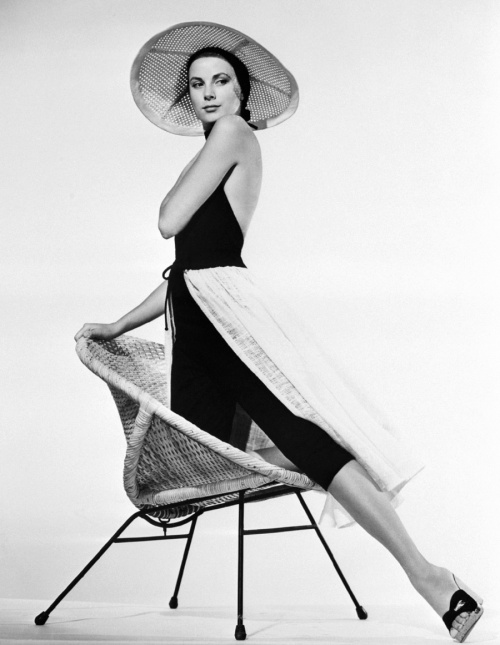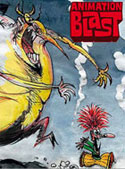There is a Los Angeles of the cinema. And of novels. This is the L.A. of dreams and nightmares, a place that exists on the periphery, a time and place that has been willed into being over that last 100 years, the modern L.A. stretching out across the desert like a monolith. This slippery version of the truth is the epicenter of glamour and glitz, of crime and punishment. This is the L.A. of Raymond Chandler and David Lynch, of Billy Wilder’s poison ode to Hollywood, Sunset Boulevard. It’s not the reality—far from it—but there are entire cottage industries devoted to this decadent mirror image. Not being from L.A. I have the luxury of indulging in this version, something akin to my romantic image of New York, seen forever in black and white, and as if everyone thing had become set dressing in a Woody Allen film. And that’s OK, I suppose. These are versions we cling to for one reason or another, spurred on by memories of sitting in the dark, watching hours of movies. All of this begs the pointed question: Which came first? L.A. or the movie version of L.A.?
Photographer Alex Prager knows this cinematic version of L.A. inside and out. Her Technicolor photos are steeped in reverence for Hitchcock films and B-movies of an old Hollywood that meets with the modern one. The lineage of her style can be traced directly back to such photographers as Cindy Sherman (especially Sherman), a photographer that also likes to stage entire scenes, microcosms of some unseen, fragile world only viewed through the lens of a movie camera. Cindy Sherman’s groundbreaking photo series, Untitled Film Stills, 1977–1980, are the likely forebears of Prager’s world. Sherman’s photos are all familiar in their own way. Haven’t we seen these scenes before, these characters? Yes and no—that’s the answer that Sherman is driving at. Her heroines are often photographed looking off-screen, as if a sinister presence was waiting just beyond the frame of the photo. These characters were always played by Sherman herself, doled up in wigs and make up that transformed her into some gangster’s moll, or femme fatale, or just a hapless victim. The photos, shot in grainy black and white, hinted that something terrible was about to happen, that, just like in the movies, we as the audience are unable to alter the future, we are made to be passive, watching until the final, fatal frame. Indeed, there is something deeply dark and disturbing about Sherman’s series that ultimately trumps the reference to certain movie tropes, and this is their ultimate power: they are tapping into something that we know on a basic level and then they are leading us further down a very dark hallway.
photo by Cindy Sherman

photo by Alex Prager
Alex Prager’s characters are more often than not female as well, archetypes from some B-movie, framed in strained, contrived poses as they too, often stare off-screen. But these cotton-candy photos insinuate a camera crew just out of frame rather than a killer/abuser about to strike. Whereas Sherman’s photos underlined a certain comment about how women are portrayed in the media (most particularly in film), Prager embraces the artifice of movie making itself—she is giving in fully to the characters and situations; everything is familiar, but unique and different at the same time. They are photos that love the movies, that are in love with the movies, that embrace the illusion that Hollywood readily provides. No doubt there is probably a subtext that Prager is driving at—after all, this is contemporary art—but the why seems less important next to the striking quality of the images themselves. 
There are often dark deeds being conducted–staging that alludes to doom, to disaster, or to something so banal and everyday that surely there is terror hidden within their blandness. The situations, however vague or bleak are always formally imaginative, Prager deftly constructing each photo in such away that draws the viewer in time and again. Her photos are sumptuous, seductive, alluring. The colors and forms, the costumes and wigs, the compositions and staging all tie together to form a dark universe. In one photo titled Eve, from her Big Valley (2008) series, a frantic woman is framed in that iconic green suit that Tippi Hedren wore in The Birds, being overwhelmed by attacking pigeons, but the background, with its rolling desert hills and looming powerline, is obviously L.A.;all at once the photo is breaking and reinforcing the idea of the appropriation of cinema. In another photo called Emily from the photo series Polyester (2007), a woman, pictured only from the waist down, is escaping down a rope, presumably out the window of an apartment building. Although no particular film is referenced, it seems as if this scene could have been lifted from any number of suspense movies. With these photos and others, Prager is erecting her own take on the power of cinema and its ability to fascinate, to capture a viewer’s imagination.
In recent years Prager has moved to making short films and commercials, which seems like a natural fit. One of her first short films Despair (2010), plays like a the crossroads of David Lynch, Alfred Hitchcock and Todd Haynes, a deadpan piece brought to life with Prager’s pension for luridly saturated colors and wonderfully contrived compositions.
In April of this year, Prager will be debuting a new exhibition of photographs complete with short film that ties into the series Compulsion (what seems to be a sly nod to Roman Polanski’s film Repulsion). A press release says this of the accompanying short film, La Petite Mort: the act of dying and the act of transcendent love are two experiences cut from the same cloth — the former a grand exit, and the latter a slow escape.”
Clearly L.A., and Hollywood in particular, continue to be fruitful muse for Prager. She is creating a landscape, a world that is so close in many ways, but one that still exists only in the world of the cinema, a place that can only come to life in a darkened theater, the audience captured by images that evoke an L.A. of wonder and darkness. This is the Los Angeles of the cinema, a distorted doppelgänger of the original, shimmering and pulsing out there in the sprawling desert of California, just close enough to touch.
You can find more of Alex Prager’s work at her website, Alex Prager Photography and Films.
All photos copyright Alex Prager and Cindy Sherman.




























 If you like ACTION, THRILLS, ADVENTURE and ARMED FLYING SQUIRRELS WITH DEGREES IN LITHUANIAN BASKET WEAVING, look no further, you have come to the right place! That's correct, folks, your entertainment dollars go further at this Website---SCOTT BROTHERS and his CATALOGUE OF CURIOSITIES---because it's FREE! Shake off feelings of BOREDOM, REGRET and SOUL-CRUSHING EMPTINESS just by looking through our pages! Nothing else to purchase to become the LIFE OF THE PARTY! With SCOTT BROTHERS and his CATALOGUE OF CURIOSITIES you can see through WALLS, produce SHRUNKEN HEADS and become as strong as CHARLES ATLAS! No money back if not 100 percent satisfied.
If you like ACTION, THRILLS, ADVENTURE and ARMED FLYING SQUIRRELS WITH DEGREES IN LITHUANIAN BASKET WEAVING, look no further, you have come to the right place! That's correct, folks, your entertainment dollars go further at this Website---SCOTT BROTHERS and his CATALOGUE OF CURIOSITIES---because it's FREE! Shake off feelings of BOREDOM, REGRET and SOUL-CRUSHING EMPTINESS just by looking through our pages! Nothing else to purchase to become the LIFE OF THE PARTY! With SCOTT BROTHERS and his CATALOGUE OF CURIOSITIES you can see through WALLS, produce SHRUNKEN HEADS and become as strong as CHARLES ATLAS! No money back if not 100 percent satisfied.



















